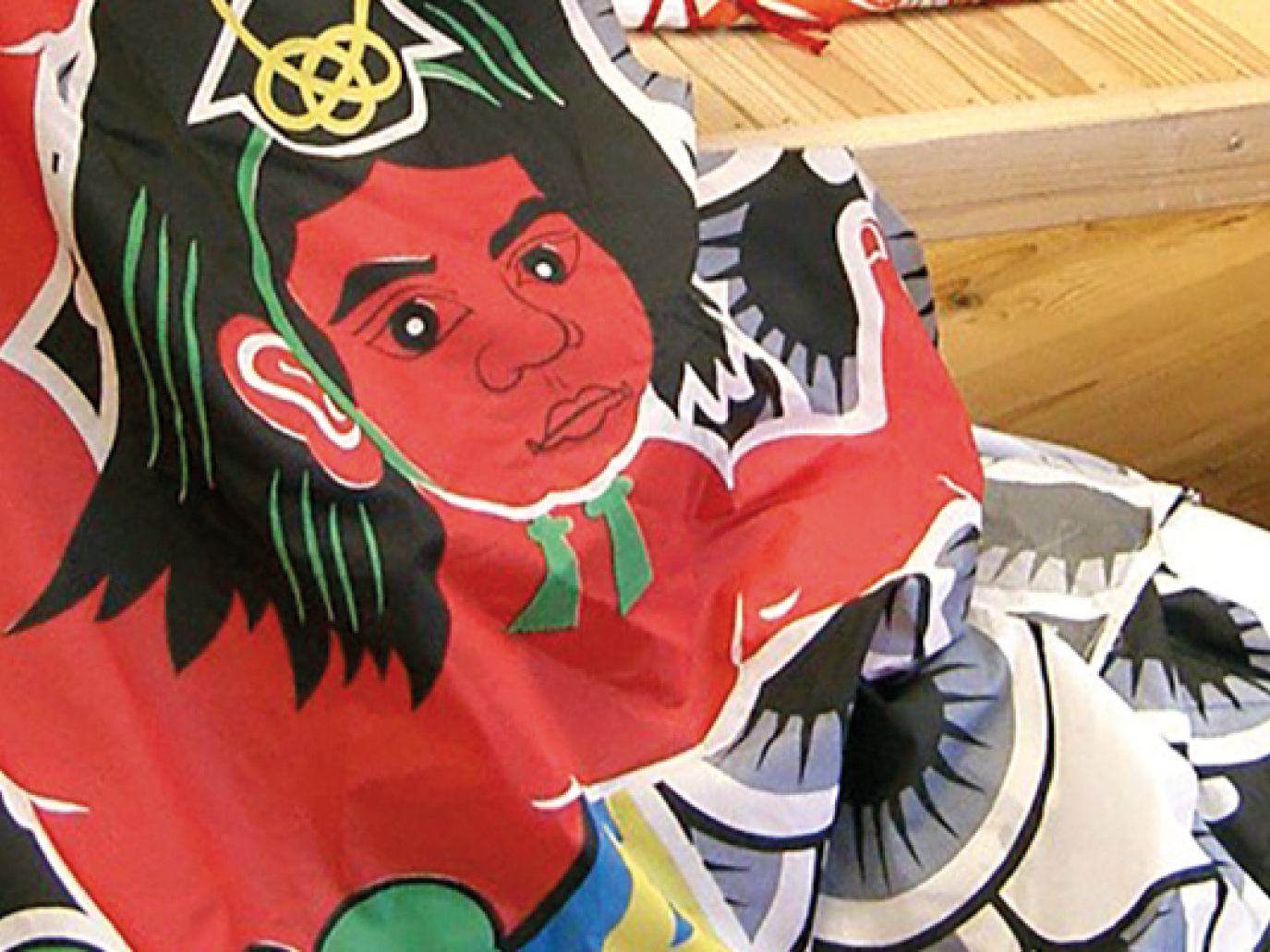Kamikatsu, a rural municipality with 1,500 inhabitants located on the wooded island of Shikoku in the Japanese archipelago, performs a record household separate waste collection with 45 different types of waste. No dumpsters along the streets and only the odd waste collection vehicle seen around elderly people’s homes. Indeed, residents themselves take newspapers, plastic packaging, lighters and batteries to a communal waste collection centre.
“Twenty years ago, we adopted a strategy to reach our zero waste target by 2020. Today, 81% of waste is sent for recycling or reuse,” explains Akira Sakano, Chair of the Zero Waste Academy – the non-profit organisation dealing with the implementation of the project in Kamikatsu – at the World Economic Forum in Davos in February 2019. Metal waste is divided into aluminium, tin, steel, spray cans and bottle caps; plastic waste is split into PET bottles, caps, polystyrene foams; bottles are separated according to glass colour; whereas newspapers, cardboard, milk containers and paper tableware are stacked on different shelves. Households generate compost from food waste. “Initially, most citizens were sceptical and worried about wasting too much time separating their waste, but then unexpected benefits came along, such as droves of people visiting the centre filling up hotels and restaurants,” Sakano proudly reveals. At the collection centre, many residents deal with the second-hand shop – the kuru-kuru shop – where used items are swapped for free, while in the craft workshop – the kuru-kuru craft centre – village grannies tailor garments reusing old clothes. During national holidays, a free tableware hiring service replaces disposable flatware. Promotions, including collectable points linked to paper waste disposal and then extended to single-use umbrellas and razors, entitle people to receive giveaways. Lastly, restaurants, bars and shops have adopted a zero waste certification system in their effort to reduce unsorted waste.
What next? “Nowadays, priorities are more complex: on the one hand to help Kamikatsu become fully sustainable, even economically, by countering issues such as depopulation; and on the other to spread the vast experience we have built up here to other places. Demand is not in short supply especially in Southeast Asia,” points out Akira Sakano.
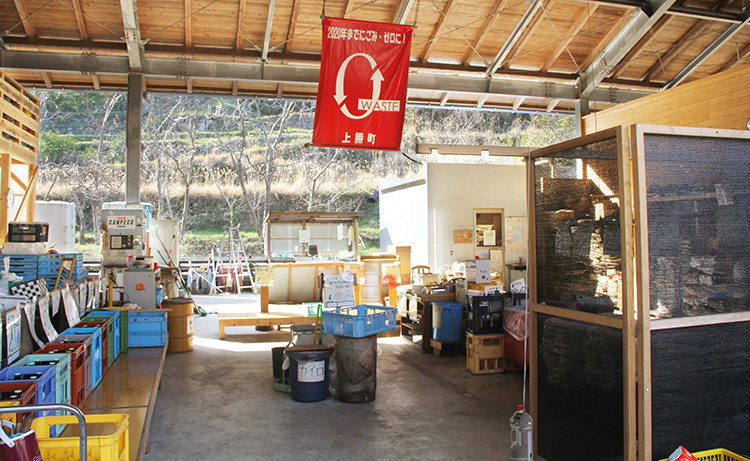 |
|
Separate waste collection centre |
Hyper Separate Waste Collection in Kamikatsu
A list of the 45 types of household waste collected separately (in brackets, destination other than recycling): reusable goods, organic waste, aluminium cans, steel cans, spray bottles, metal caps, metal objects, newspapers, cardboard packaging, magazines, milk cartons, paper tableware, paper and aluminium containers, carboard, paper cuttings, mixed paper material, used clothes, non-recoverable garments (transformed into RPF – Refuse paper and plastic fuel – obtained from non-recyclable paper and plastic waste), wood chopsticks (for combustion and RPF), cooking oil, washed plastic packaging (recycling and RPF), unwashed plastic packaging (RPF), white polystyrene, other polystyrene (RPF), PET bottles, PET caps (plastic objects and RPF), white glass bottles, coloured glass bottles, mixed colour glass bottles, returnable bottles, glass jars, mirrors and thermometers containing mercury, fluorescent bulbs and tubes, batteries and accumulators, lighters, bulky metal items, bulky wood items (RPF), matrasses (RPF), bulky PVC and rubber items (incineration), leather and PVC waste (incineration), nappies and paper napkins (incineration), tyres (RPF), hand warmers and miscellaneous components (landfill), household appliances (collected by producers).
While Kamikatsu was the first Japanese municipality, in 2003, to commit to the zero waste target with a deliberation passed by the town council, other municipalities followed suit: Oki (15,000 inhabitants), Mizuma (14,000), Minamata (25,000) and Ikaruga (28,000), as well as Osaki (134,000 residents), Zushi (58,000), Hayama (33,000) and Soo (13,000) that share the same target albeit with no formal commitments.
The zero-waste “fever” of Japanese municipalities is no surprise: the first national measure to promote separate waste collection, as well as packaging and container recycling (such as bottles and cans) dates back to 1997. Later on, in 2000, Japan adopted the 3R strategy: Reduce, Reuse, Recycle. The Fundamental Plan for Establishing a Sound Material-Cycle Society (A framework Act for the creation of a society properly based on circular implementation of materials) is a landmark towards such targets. “Such measures lay the foundations for the creation of a society based on the 3Rs in order to promote the use of natural resources and reduce environmental pressure. Furthermore, it allocates tasks and responsibilities to various stakeholders: the State, local governments, businesses and citizens,” explains Yasuhiko Hotta – Director of the Department for Sustainable Consumption and Production of the Institute for Global Environmental Strategies in Tokyo. According to such subdivision, the State regulates the post-consumer household waste management, while local authorities are responsible for the collection. “The most popular method is waste depots financed by municipalities and managed by citizens where, according to the days of the week, certain waste types are taken for recycling,” states Hotta. “Some municipalities apply a quantity-based tariff equal to the cost of liners for unsorted waste. This system helps reduce the amount of waste disposed of.”
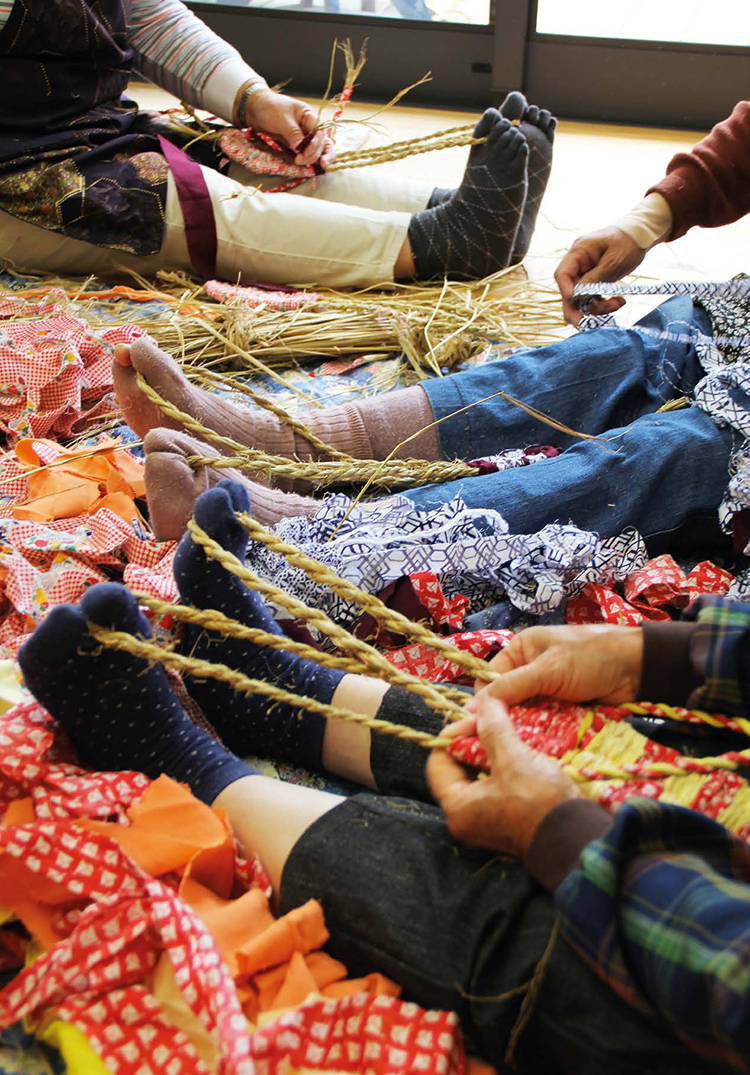 |
|
Women working in the craft centre |
But there are also some municipalities that “demand that users write their names on top of liners, so that they can trace them back in case of mistakes. With names, if irregularities are spotted, operators may inspect liners in order to gather useful elements and retrace the waste back to the citizen who – when found – can be educated as to the correct way to carry out separate waste collection,” concludes Sakano.
The implementation of the 2000 Framework Act is articulated in the five-year plans known as Fundamental Plans, setting targets and measures to reach them as well as indicators to monitor results, such as productivity of the use of resources, reuse of recycled materials in production cycles and post-consumer recycling percentages. It also includes specific directives on the treatment of write-off vehicles, home appliances, household electronic devices, packaging, inert waste from demolition materials and food waste.
To promote the market of eco-friendly recycled materials and services, the Green Purchasing Act was also approved in 2000, addressing public administrations in particular, whose purchases account for 20% of Japanese GDP. Lastly, in 2001, the law on waste management and public health introduced strict anti-dioxin rules leading to the decommissioning of small incinerators. A government-funded eco-town programme, that between 1997 and 2007 led to the establishment of industrial infrastructure for waste recycling and treatment, is another pillar of the Japanese government’s push towards zero waste.
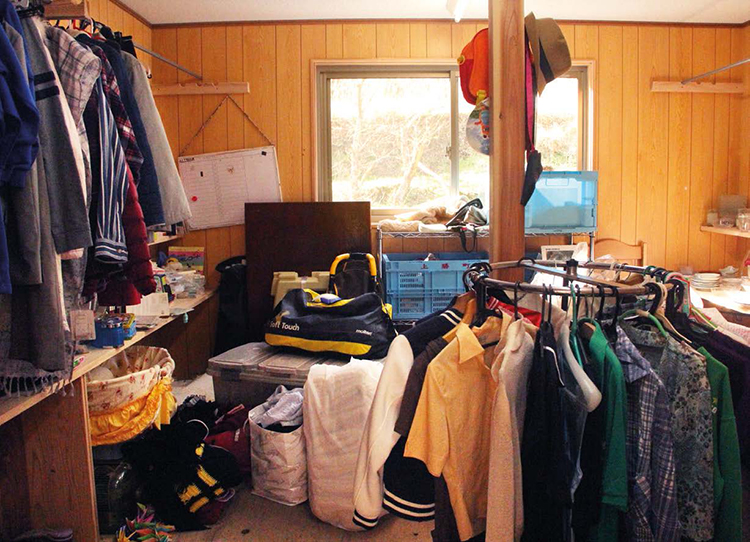 |
|
Kuru-kuru shop |
To date, the four targets/plans approved over the years draw inspiration from various needs. “Firstly, the priority was to promote recycling to reduce the use of raw materials. Secondly, it tackled export issues, for instance to China and Southeast Asia, of used goods and recyclable materials. A widespread phenomenon that is criticised for failing to verify the correctness of final treatment,” explains Hotta. Today, exports are illegal, so the percentage, which in the past was almost 30%, is now considerably lower. The third plan managed to give impetus to the Rs for reduction and reuse, whereas the fourth, approved in 2018, “tackles more complex ecological issues across the board, moving on from just waste, and addressing issues such as international commitments on climate and the 2030 UN Sustainable Development Goals,” points out Hotta. In particular, Japan focuses on the one hand on new business models no longer based on spurring demand but rather aimed at supplying goods in the truly needed quantity, and on the other on shared services, reducing the use of resources in production and promoting products’ intensive use. Ecodesign will have to guarantee reparability, replaceability, dismantling, post-consumer separate waste collection and goods updating. Within the new business models, distributors that are able to connect producers and consumers will prevail. Thanks to Industry 4.0, the Internet of Things, robotization, Big Data, artificial intelligence and other technological innovations, an economy with a reduced use of resources is expected to pick up. The fourth target/plan also outlines Japan’s intended role on an international level in the circular economy and expanding its waste management and recycling industry abroad, including importing waste from countries with no recycling technologies.
The announced measures include organising national citizens’ awareness campaigns, so as to halve by 2030, compared to 2000 levels, food waste and improve recycling; setting up household waste collection procedures better suited to an aging population; further promotion of the use of waste-derived energy.
Citizen Awareness Campaigns
Citizen awareness campaigns include “Waste Reduction and Recycling Promotion Week” which opens every year on 30th May.
October is the month devoted to the promotion of the 3Rs (reduce, recycle, reuse) with initiatives for consumers and economic operators. The “Environment-Friendly Consumption Campaign” is led by the government, local administrations, producer associations, manufacturers and retailers.
The Ministry of Environment awards prizes to citizens, businesses and communities excelling in Establishing a Sound Material-Cycle Society. The website Re-style raises awareness online about the importance of the 3R strategy.
According to statistics, over 60% of Japanese people carry out separate waste collection, buy bulk goods and use reusable shopping bags; about 20% do not buy throwaway or unnecessary products, use their chopsticks in restaurants and buy used or recycled products.
Citizens’ involvement in removing waste after football matches, other sports or entertainment events is also rising.
Detailed 2025 goals include: recycled material use rates (on resources used) set at 18% (compared to 16% in 2015), recycling rate of waste generated at 47% (44% in 2015), and reduction of landfilling to 13 million tonnes per year compared to 14 million in 2015. By 2025, the per capita production of household waste will have to be reduced to 0.440 kg/day (compared to 0.507 in 2016 and 0.653 in 2000). From an economic point of view, the 2025 goal is to double the market value of Japan’s 3 Rs (efficient use of resources and equipment, waste treatment and recycle, use of clean energies, durable building, sustainable agriculture, fishing and forest management) which was assessed in 2000 and amounted to 40,000 billion yen (increased to 47,000 billion in 2015).
As for the efficient use of resources (expressed with the ratio GDP/tonnes of natural resources used in the industrial sector and in citizen consumption) indicators included in the 4th plan show that over the years this ratio constantly improved (+50% in the 2000-2009 decade), increasing from about 230.000 yen/tonne in 2000 to 380.000 yen/tonne in 2015 and then stabilising. To get things going again, the fourth target-plan raises the bar to 490.000 yen/tonne by 2025.
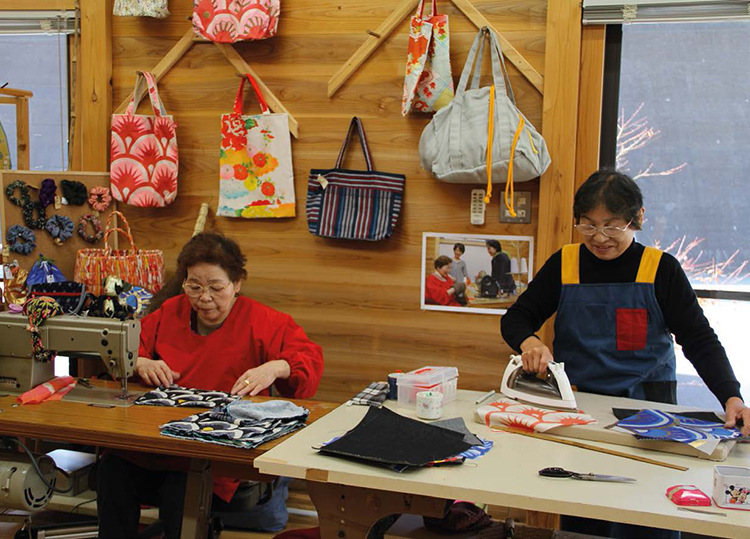 |
|
Old ladies at work in the kuru-kuru craft centre |
To tackle plastic waste, the government plans to promote reusable shopping bags, non single-use tableware and recycled containers. As for non-recyclable plastic, and bioplastic, when reaching mass size, they will be incinerated for energy recovery.
The 2018 Report The Circular Economy for Public Policies. The Role of Certification by Accredia (the single national accreditation body designed by the Italian Government) puts the spotlight on recycling percentages achieved by Japan in some areas: 98% for metals, while for household appliances between 74% and 89% of materials are recovered and reused. For instance, with the very metals recovered from electronic equipment they will produce Tokyo 2020 Olympics and Paralympics medals.
The law on extended producer responsibility provides for a contribution payable by consumers to cover collection and post-consumer costs and appoints producer consortiums with the management of recovery plants. For this reason, before starting production, manufacturers send their prototypes to disassembling plants, which they co-own, to test disassembly efficiency (source: Accredia Report). Data on illegal disposals are also positive: from 1,197 cases in 1998 down to 131 in 2016 (but with a single dumping event of 5,000 tonnes in 2016). This thanks to the spread (57% in 2017) of electronic delivery notes for waste traceability (from producer to appointed managing plant) now compulsory by law for big producers of hazardous waste (excluding PCB). The new target for 2022: 70% reuse. There is also a proposal for a hotline to collect reports of fly-tipping by citizens.
Post-disaster Waste Management
Since 11th March 2011, Japan has been dealing with an unprecedented problem: managing nuclear waste created in the aftermath of the earthquake and tsunami that hit Fukushima Nuclear Power Station. But there is more. Earthquake risk and the reoccurrence of extreme natural phenomena raise fears of even worse disasters, for instance, if Tokyo metropolitan area were to be hit. A situation that requires the country “to devise a system for the management of waste deriving from natural disasters”, says the fourth target-plan, because, “acting promptly to collect and treat waste in affected areas is essential to make them liveable again.” But at the end of 2016 only 24% of municipalities were equipped with such a plan.
As for Fukushima, the evacuated area has been nearly totally remediated, excluding the one labelled “Difficult Return.” Storage of removed soil and contaminated debris started in October 2017. In March 2018, 1.91 million tonnes were transferred to temporary storage and subsequently incinerated in temporary plants built in various municipalities to share the amount to be treated.
So, is everything fine? No, not according to the Zero Waste Academy Chair. “For instance, household and tertiary-sector waste recycling only amounts to 20%, while the remaining 80% ends up in incinerators. To truly embark on the 3R path, the government should allocate to recycling plants those public subsidies with which it currently supports incinerators.” Whilst acknowledging that, “in the industrial sector recycling rates are higher because businesses are equipped with suitable technology for it and a specific waste range to treat, what really matters is the percentage reintroduced into the production cycle and that used as fuel. Much better than burning without energy recovery or landfilling,” points out Akira Sakano, “but incineration has nothing to do with recovering matter according to the principles of the circular economy.”
“This is the only planet we have and we are destroying it,” says Sakano with deep regret at the World Economic Forum in Davos. “I have a daughter who is only a few months old and I think, if things do not change, that when she grows up she will not be able to see, if not on a screen, the beauty of nature with her own eyes.” Recovering and reusing everyday goods helps cut waste production and preserve the planet, claims a video shown in Davos. “Why is your country not learning from Kamikatsu?” is the closing question.
Zero Waste Academy, zwa.jp/en
Fundamental Plan for Establishing a Sound Material-Cycle Society, 4. ed. giugno 2018, www.env.go.jp/en/recycle/smcs/4th-f_Plan.pdf
Video “This Japanese town produces almost zero waste”, WEF Davos 2019 www.youtube.com/watch?time_continue =31&v=uovxjsO4VnY
Re-Style, www.re-style.env.go.jp
Accredia, L’economia circolare nelle politiche pubbliche. Il ruolo della certificazione, maggio 2018, www.accredia.it/pubblicazione/leconomia-circolare-nelle-politiche-pubbliche-il-ruolo-della-certificazione



